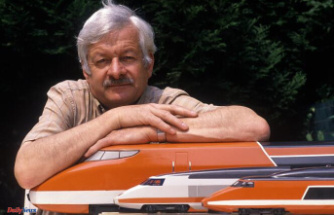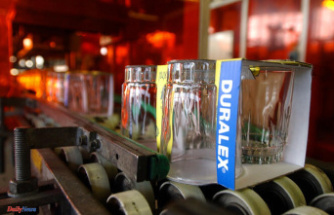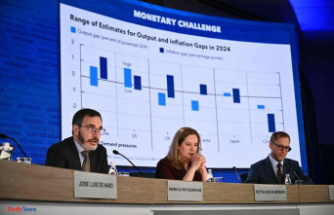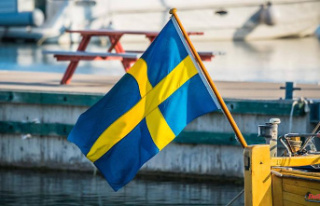If electromobility is part of everyday life anywhere, then it is in Scandinavia. So a long-distance trip to the Arctic Circle and back shouldn't be a problem - or should it? After all, cold is supposed to be poison for the batteries. A self-experiment.
It's cold and uncomfortable, lonely and dark. The white sedan with the Stuttgart license plate looks as out of place here in the Finnish forest as a UFO. But you can quickly find a connection here. At least if the supposed UFO is electrically powered. In the literal sense, because otherwise the journey would soon be over without a charging break. And in the transferred, because a conversation unfolds wherever a few electric car drivers get together.
And up here, three hours north of the Arctic Circle, at the only charging station within a radius of more than 100 kilometers, such encounters are almost guaranteed, even in the middle of the night. What am I doing here? One of the questions.
In Germany, which has a moderate climate but is densely populated, e-mobility may now be working. But what about the sparsely populated regions of the north and east? What about ice and snow and temperatures in the double-digit minus range? To find out, I set out from Germany to circumnavigate the Baltic Sea and cross the Arctic Circle.
The car for this adventure is the Mercedes EQS - and chosen with care. It not only offers the necessary comfort for driving days of sometimes more than 16 hours, but also around 670 kilometers standard range. While the 523 hp are just as irrelevant on this tour with an almost constant speed limit as a top speed of 210 km/h, the all-wheel drive will still prove useful.
Instead of going straight north, the route first goes east, from Frankfurt to Dresden and then to Poland. There are apparently hardly any e-cars there, but the infrastructure is surprisingly good. There is a fast charger every 50 kilometers. And the app of the local energy supplier can also be used by foreigners without any problems.
After Warsaw it goes north and on secondary roads via Lithuania to Latvia. There the thing with the shop is no longer so easy. The pillar in front of the hotel only works with a local app. At night in the stormy rain it takes a little while for someone to help with the translation.
And because you need credit first, but international credit cards are not accepted, someone has to accept cash and deposit it online. It's a good thing that they at least have the euro here - and apparently compassion or curiosity and a willingness to help.
The eastern coast of the Baltic Sea seems strangely calm on these late winter days. The streets are empty and the landscapes are vast. And because the free Porsche column in the next hotel in Pärnu only charges with 11 kW, there is time for breakfast, a wellness stop in the old bathhouse, a walk through the spa district to the beach with towering ice floes.
The developers have repeatedly explained that the cold is poison for the batteries. Keeping them in their comfort window takes a lot of energy. But the range is still better than expected at over 400 kilometers. Because what the EQS wastes on heating and comfort, it saves again thanks to the strict speed limit.
After all, it's not quite as cold as feared. In any case, the Ice Roads, which connect the mainland with the islands around Haapsalu and make the ferries superfluous in winter, are closed again. The ice is too thin to carry cars. Nevertheless, there is a tremendous crunch as the ferry makes its way through the channel. This applies to the small vessels around Tallinn as well as to the "Finbo Cargo" that takes you to Helsinki.
Once there, the infrastructure is even better. And for the first time even Plug works
Helsinki is drowning in snow, the highway is frozen on the way north. The landscape is becoming more and more monotonous, winter is gaining the upper hand. What was no longer possible in Estonia is commonplace up here: rivers literally become waterways and the route leads over kilometers of ice.
And at the latest when, in addition to the ubiquitous snowmobiles, cross-country skiers and dog sleds, even trucks cross the lake next to the bridge, I also feel safe - even if the EQS weighs 2.4 tons. So it goes further north. Past the Christmas Village in Rovaniemi and finally over the Arctic Circle.
Past herds of reindeer and holiday farms, where guests flown in plow through the forest on dog sleds. Only the thing with the northern lights does not want to work so far - even with a 75 percent probability according to the Aurora app. But one night the time has come.
Without warning, just on the way to dinner in the Lyngen Alps, the sky suddenly clears. And above the fjord and the mountain range opposite, the wisps of light from the aurora borealis dance. Maybe, it crosses my mind on the first night in Norway, canceling the trip to the North Cape wasn't a bad idea after all. After all, the northernmost road in Europe is only used in convoys behind a snowplough in winter.
Instead of wasting so much time, I preferred to turn west shortly after Inari in Finland. The EQS rolls very slowly through Karasjok. Thanks to all-wheel drive, we continue across deep snow through endless expanses and forests without a charging station to Alta, the northern turning point of this journey.
Along the coast and again and again over a few icy ridges down to the next fjord, it only went south from there - to the stop in Lyngen. Thanks to the flickering skies, this is one of the highlights for the Polar Express.
Northern Norway doesn’t really offer that many charging options. And of course I can only get three quarters of it to work. It is better not to exhaust the displayed range - regardless of whether it is from the navigation system or the smartphone app. After all, the few loaders are of the fast variety.
And sometimes there is even a charming café or supermarket next door. This way you get better into the rhythm of driving and charging day after day. One only laughs about the different operators and the hurdles with which they want to extend the stop. If it doesn't work right away or with the Mercedes charging card, you have fast internet everywhere in the north. And with some app, the electricity is already flowing.
Things only get critical once in Lofoten. They show their stormy side: first half a meter of fresh snow, then a thaw with winds of more than 100 km/h and ankle-thick ice on the roads. That eats into the range and drives the heart rate up: Because the way forward is suddenly closed due to an avalanche and the bridge back is tight due to the storm.
Because there are no charging stations in between, nervous calculations: How long can an electric car be stuck in a traffic jam with the heating on? And then how do you get away? Fortunately, the bridge is free again after three hours. An emergency that you can philosophize about over a beer in the sauna in the harbor of Svolvær i Lofoten in the evening. Outside, the stockfish clatters in the drying racks and the sweat cabin on its pontoon rocks wonderfully every time a trawler starts the next catch.
So relaxed it goes further south. Once again over the Arctic Circle and for a short detour to Arjeplog in Sweden. Car manufacturers test their prototypes there. It is true that there have long been more electric cars than combustion engines. But they don't have more than the two fast chargers at the gas station.
But that's how the EQS gets the boost that takes me further south and back to Norway. Back on dream roads like the Atlanterhavsvegen. A couple of islands are breathtakingly connected to the Atlantic Road. The further south you go, the more routine the journey becomes: as population density increases, so does the density of charging stations. And what you lose in waiting time, you gain in knowledge from the many interesting discussions. With a good deal of melancholy, we board the ferry to Denmark in Stavanger, because the extreme electric road trip is almost over by then.
One more limit, then the German autobahn lures again and forces the frequent electric driver to rethink. Two unsuccessful charging stops show that the communication between car, card and charging station is far less good here than in some other countries along the route. The routes without a speed limit are also poison for the range. Suddenly you have to turn right a lot more often than further north.
The tour ends 12 days, 11 national borders, 9117 kilometers and three dozen loading stops after the start back in the middle of the republic. The on-board computer shows average values of 66 km/h and 25.6 kWh/100 kilometers and I have gained a lot of experience.
Yes, electric mobility now also works on long-distance routes. And even under adverse conditions. Yes, you have to plan a bit better and you are no longer as spontaneous as with a combustion engine. But you can make friends everywhere and make a few new friends. Even north of the Arctic Circle.












